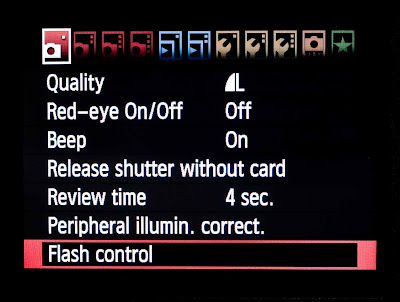Once again, it’s that time when we customarily review the best, worse, etc., etc. of the past year. I now get to be judge, jury and the only contestant in my personal photo contest. While searching for potential entries, I was somewhat disappointed to find I’ve spent more time on testing and technique than on producing “fine art” photographs. On the positive side, I’ve taken even more photographs of my granddaughter.
I sure like my new 7D. For a couple of weeks I was concerned that my own 7D had the focus problem that had so occupied Internet discussion forums. I finally realized that my apparent problem was actually a combination of Canon’s focusing logic, lens calibration, depth of field and (in my opinion) the 7D’s need for additional capture sharpening. I’ve calibrated my lenses and now use center point focusing, higher numbered f stops and more capture sharpening. Perhaps the 7D update to ACR helped a bit as well.
.jpg)
In the above picture, the on-camera flash of the 7D was used to trigger a 580EX with Stofen diffuser that was above and slightly behind her. The room also gets good light from the doorway. The ratio of 580EX to 7D flash was set at 4:1. A good picture, if I do say so myself and extremely popular within the family. The song? “When Christmas comes to Town”.
.jpg)
With the G9, I rarely attempted action photography and am on a steep learning curve with the 7D. The above photo of a white pelican landing is one of my better efforts. Previously, I posted other photos of white pelicans at LSU. Notice that the pelican in the background is out of focus even though the aperture was set at f8; the depth of field was simply too shallow with the 100-400mm zoom at 400mm. This is not a focus problem.
.jpg)
I worked hard to make the above “real estate” photo of a large bathroom using the G9 plus wide angle converter, many wireless flashes and stitching to get the final image. Alas, when entered in a Strobist contest, it did not get even an honorable mention. I suppose I shouldn’t call it my best shot of 2009 but I do like it.
.jpg)
I really like the above pier in sunrise image and posted it previously. My original thought was HDR techniques so I used auto bracketing in the 7D to capture several exposures. Somehow, my HDR efforts just did not appeal to me so the above image is from a single shot. Yes, the colors are not particularly true; however, the colors are nearly the same as the 7D in-camera JPEG using auto white balance (meaning that the white balance is actually wrong). However, it was a beautiful morning.
.jpg)
Back to the G9 for my best shot of the year. Again, I thought to make an HDR image but quickly reverted to processing a single file. My wife likes it – always a good sign – and it was a winner in one of the monthly competitions at our photography club. I liked it enough to post previously.
Equipment wise, if 2008 was the year of the G9 for me, then 2009 was a transitional year to the 7D and 2010 will be my year of the 7D. I’ve resolved to focus more on content than equipment and was pleased to note that some of my better photographs had been previously posted. I plan to continue posting my better efforts. We’ll see how this resolution works out.
Happy New Year!
.jpg)
.jpg)
.jpg)
.jpg)
.jpg)



.jpg)




.jpg)
.jpg)

.jpg)
.jpg)
.jpg)





.jpg)
.jpg)
.jpg)
.jpg)
.jpg)
.jpg)
.jpg)
.jpg)
.jpg)
.jpg)
.jpg)









.jpg)
.jpg)